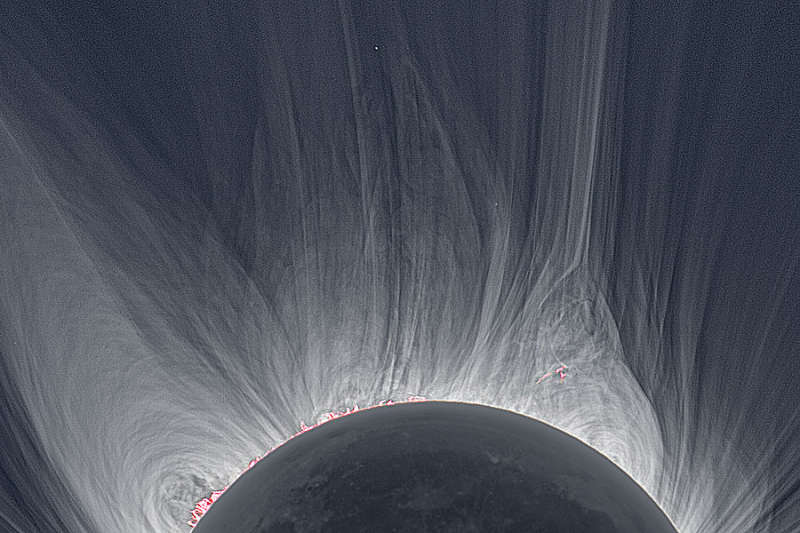
|
Credit & Copyright: Miloslav Druckmщller
(Brno University of Technology),
Martin Dietzel, Peter Aniol, Vojtech Ruin
Explanation:
Only in the fleeting darkness of a total solar eclipse is the
light of the solar corona easily visible.
Normally overwhelmed by the bright solar disk, the
expansive corona, the
sun's outer atmosphere,
is an alluring sight.
But the subtle details and
extreme ranges in the corona's brightness, although discernible
to the eye, are notoriously difficult to photograph.
Pictured
above,
however, using multiple images and digital processing, is a detailed image of the
Sun's corona taken during the
2008 August total
solar eclipse from
Mongolia.
Clearly visible are intricate layers and glowing caustics of an ever
changing mixture of hot gas and magnetic fields.
Bright looping prominences
appear pink just above the Sun's limb.
The next total solar eclipse will be in July but will only be visible in a thin
swath of Earth crossing the southern
Pacific Ocean and
South America.
|
January February March April May June July August September October November December |
| ||||||||||||||||||||||||||||||||||||||||||||||||
NASA Web Site Statements, Warnings, and Disclaimers
NASA Official: Jay Norris. Specific rights apply.
A service of: LHEA at NASA / GSFC
& Michigan Tech. U.
Based on Astronomy Picture
Of the Day
Publications with keywords: total solar eclipse
Publications with words: total solar eclipse
See also:
